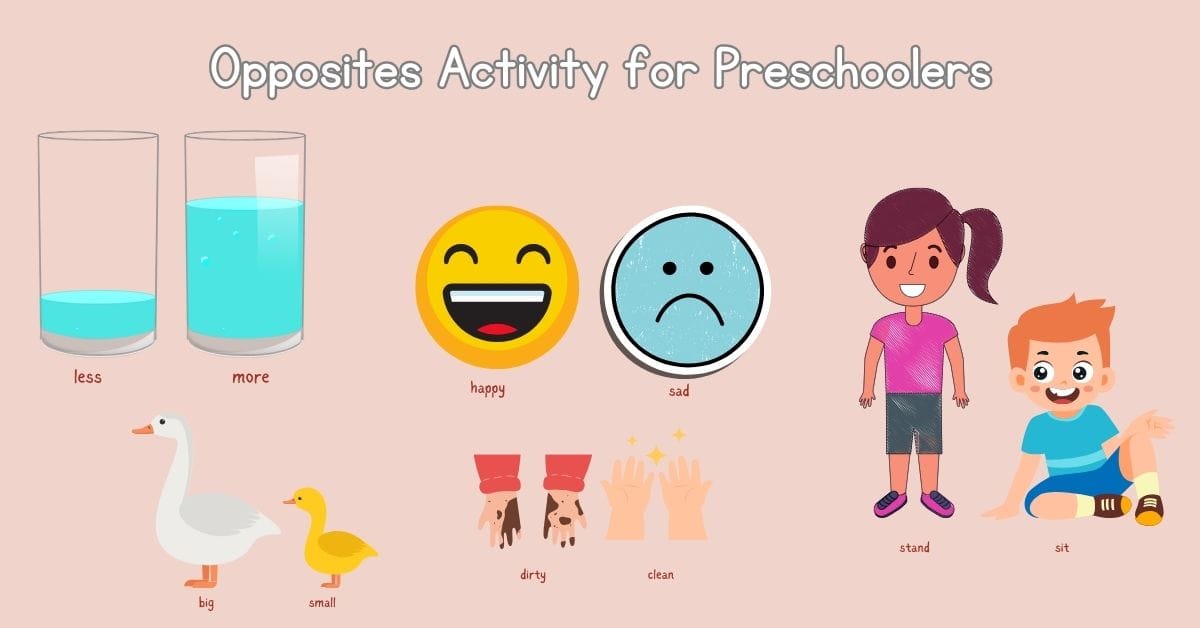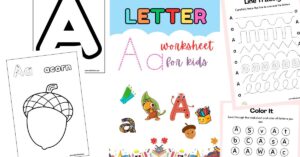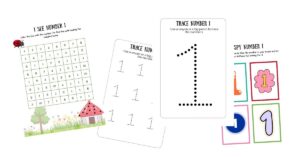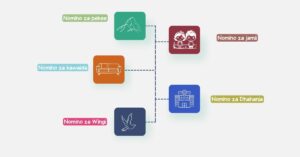Big/little, happy/sad, up/down, cold/hot. These are a few examples of opposite words that young children know by the time they start elementary school. They seem, even sound easy to any of us, and they are, but not to kindergarteners. In fact, teaching the concept of opposites is one of the toughest challenges teachers and parents go through with their preschool kids. This is why we recommend these opposites activities for preschoolers to make the job just a little bit easier.
But first…
What is the Importance of Learning Opposite Pairs?
Well, opposite words are a big part of what we call Basic Concepts. These are the building blocks that kids need to successfully listen, speak, read, write and do mathematics. Basic concept words occur every day in life and in school and a good understanding of them is directly related to academic achievement and communication.
More importantly, they are building blocks needed for us to follow directions and provide descriptions. Understanding the concept of opposites adds new vocabulary and understanding so they can communicate better. For example, they can now describe their dolls as big or small, their beverages as hot or cold and so on.
So back to the topic. How do you teach opposite words to preschoolers?
There are two ways, but we will focus on one here because you should keep it simple with young kids.
- In Related Pairs. You should present the two opposite words only and teach the meaning of each. For instance, happy/sad are emotions, and you can use a fun way of teaching, such as making or drawing happy and sad faces.
- With a Foil. A foil is a word whose meaning is between two opposite words. For example, middle is a foil between top and bottom, while warm is a foil between hot and cold. This is a great way to teach opposite words to elementary kids, but it complicates things for children.
To help you out here are a few easy opposite activities for preschoolers.
Easy Opposites Activities for Preschoolers
1. Simple Crafts
Nothing beats crafts when it comes to teaching opposites to preschool kids. The art or visual demonstration captures kids’ interest and stays with them long-term. The most straightforward and most used craft is making charts (using colored Manilla paper) with opposite words and pictures. Post them in different areas of your classroom so kids can see them whenever they look up. You will also need to go through them often with the kids just to draw their attention back there.
Also read: Frog Crafts for Kids: How To Make Frog Crafts
Other craft activities you can use to teach opposites include;
- Collages. Cut pictures from magazines, books and newspapers that show opposites. I have, for example, pictures of big and small houses, nighttime and daytime, black and white and so on. This is just like charts because you paste the opposite pictures side by side, but they are more descriptive.
- Emoticons. Emoticons, or emojis, have endless opposites from happy/sad, laugh/cry, hot/freezing, left/right, among others. Cut out these faces and glue them on a big white paper for kids to learn with. We will look at other ways you can use these emojis later. For now, check these emotions stickers for kids.
- Objects. You can use things you find in class or outside to demonstrate opposites. Use craft sticks, for example, to show long and short. You can get a large piece and a small one. You can also use fabric pieces or pieces of paper to show length, width, color, or texture.
2. Games
Games are a great way to teach opposites because kids love to play and have fun. Among the game I recommend are;
- Flash Cards. Download flashcards with pictures and names of opposite words. Alternatives, make some yourself, but make sure they are things your child understands. Examples include a picture of a small dog and a large dog, little hands and big hands, a picture of a child and an adult etc.
The game is to have the preschooler match sets of opposite flashcards. When they do so, clap and cheer for them for motivation.
- Acting. Yes, I’m talking about acting out opposite actions like charade games. For this, adults must get involved to demonstrate to the kids how it’s done. For instance, stand up and down, have two adults act out the two actions. You can include forward/backward, east/west, short/tall etc.
- Puzzles. Puzzles have many benefits, and this is just one of them. Your preschoolers can piece together an opposites puzzle like this one from QUOKKA 5X MEGASET Puzzles and match the pairs. This is a multi-purpose game that will also teach them problem-solving and critical thinking and work on their fine motor skills.
3. Toys
Toys are a free and readily available resource for teaching opposites to preschoolers. How, you ask?
- Get a big teddy bear and a small one, or a black and white.
- Take balls of different sizes to demonstrate big/small ball, heavy/light and float/sink.
- Take a noisy and a quiet toy to demonstrate loud and quiet sounds.
- Use a box and a ball to teach in/out, over/under or up/down.
4. Movement
Another terrific way to teach opposites words is through movements in the form of exercises, games or orders. As the teacher, you have to teach the words first, and when you are confident they know most of them, create a movement game. The idea is to say a word and tell the children to do the opposite of what you have said.
Examples;
- Take a big step
- Lift the leg high
- Sit down
- Make a happy face
- Turn right
- Crouch down
This is the same as Simon Says game; you can play them interchangeably.
5. Sensory Bin
We have discussed what to hide in a sensory bin and their benefits here if you want to learn more. Fill up one with contrasting textures like smooth/rough, hard/soft, wet/dry and let the children explore with their hands.
You can put sand as the primary sensory substance and add small rocks and marshmallows, tiny plastic balls and golf balls, water beads and play dough etc.
Of course, you will be right there teaching them about the different textures and their opposites as they feel the sensations on their little hands.
6. Story Books
Plenty of children’s books teach opposites like this one from Frank Lloyd Wright that offer a fun way using images. Storybooks work exceptionally well because stories stick in mind, and they are descriptive, so it’s not hard to imagine. Once the story ends, encourage a brief discussion about the opposite words you came across in the story.
Another popular children’s book dealing with opposites is Big and Little: A Story of Opposites, and it’s suitable for ages 3 to 6 years. Others include Big Dog…Little Dog by P.D. Eastman, Bow-Wow Attracts Opposites by Mark Newgarden, Exactly the Opposite by Tana Hoban, Olivia’s Opposites by Ian Falconer and Opposites with Oswald by Lauryn Silverhardt.
7. Sorting Game
Provide a variety of opposite objects and their corresponding pictures and task your learners with sorting them into opposite categories. For example, you can have white and black balls or beads and two containers written white and black. The child will put the right color in the right container.
I’ve also had the kids sort block pieces into big and small or balls into heavy and light. You can do this with many objects around the house with some creativity.
8. Cooking
Preschool kids love helping mom and dad cook and prepare food items. You can use that opportunity to teach a few opposite words. There is nowhere better to learn about hot and cold temperatures, for instance, or soft and hard. Mashed potatoes will demonstrate that perfectly.
Snacks are also very useful in this area. Find a variety of snacks like chips, biscuits, marshmallows, cheese, puffs, and grapes.
Other opposite concepts kids can learn in the kitchen include big/small, sweet/sour, up/down and rough/smooth. Use veggies, fruits and dishes/cutlery to teach these concepts.
9. Opposite Day
If you teach a preschool class, you can ordain one day of the week to be the opposite day. Higher grades have foreign language day, among other things, and it’s all about dedicating that day to focus more on the topic at hand.
On this day, you will delve deeper into opposite meanings, opposite directions, and basic opposites. You will also do some of the fun activities we have discussed here and ensure everybody in the class has grasped the concept of opposites while having fun.
The next day, you can start the morning with a simple brain teaser where you say a word and see if they know it’s opposite equivalent. Do this every week, and they will grasp the concepts within no time.
Teaching Opposites Activities for Preschoolers
Here’s the thing about teaching preschool kids- you only need to look around you and use what you see. Teaching opposite words is no different. In fact, the environment is designed for this purpose because everywhere we go we can see opposites.
While these fun ideas are great, I recommend doing what my mother did. Take everything as a learning opportunity. If you are outside taking a walk, use trees, sticks on the ground, and animals to teach. If you are cooking, use the ingredients or dishes you are using to teach. The idea is to make it fun and help kids learn outside of school.




